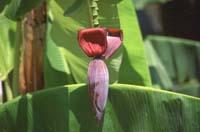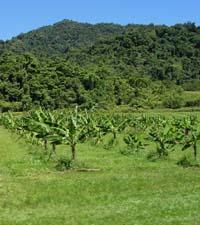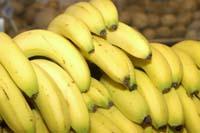Save bananas

Banana is the fourth dish behind rice, wheat and corn. It is the basis of feeding 400 million people and the fruit that is most exported.
It has long been known. The first mention of the fruit is that of Alejandro Handia. BC. He knew the fruit when he entered India strongly in 327 and it seems that he liked it very much and expressed it in a writing.
In fact, banana is originally from India and Southeast Asia, and in India there are many varieties. India is also the largest producer of bananas, with a 20% growth of bananas produced in the world.
However, this variety is in danger. FAO warns that many forests for wood and pasture creation have been eliminated in India. Along with this, urbanism has acquired great strength and, as a result, wild varieties born more than a thousand years ago are being lost.
Genetic variability

Small varieties are grown by large producers. (Photo: MEC)
Large producers only grow a few varieties. These varieties are selected for their suitable characteristics from the market point of view, but are vulnerable to diseases. In fact, their genetic variability is low and, therefore, if a disease is attacked, all are lost.
For example, the Gros Michel variety predominated in the 1950s. However, Panama's disease ended this variety and then the Cavendish variety began to be planted. It is sweet, fleshy and large, and today it is the most widespread variety. Of the 72.6 million tons per year of production, almost 20 million belong to this variety.
Experts are concerned about the ever-decreasing variety of varieties, making it increasingly difficult to replace Cavendish or one of the dominant varieties with another disease resistant.
Farmers worldwide grow more resistant varieties than commercial varieties. However, care should be taken. For example, a terrible disease called black sigacota has caused the loss of bananas from the Amazon area and other parts of the world. One of the varieties that have disappeared in India was resistant to this disease. Now there is only one specimen of the variety, in the botanical garden of Calcutta.
To avoid this, FAO wants to conduct a systematic study. This aims to know the state and variety of the ecosystems of bananas. It also requests funding for habitat protection and genetic studies.
Eat, drink, heal...

In Euskal Herria bananas are eaten mostly raw, but can also be taken in eleven other forms. (Photo: MEC)
No wonder FAO is concerned about the loss of variety, given the amount of bananas consumed and why. In Euskal Herria sweet bananas are eaten mainly raw. But some varieties are eaten cooked, roasted or fried in many places. Flour and banana puree are also made, while banana ketchup is very common in the Philippines.
In addition to food, banana drinks are also made, both alcoholic and non-alcoholic. On the other hand, they are also used in medicine, for example, to alleviate digestive problems. Finally, with banana fiber ropes, paper and fabrics are manufactured, and large banana leaves are used as a plate and to make covers.
Published in 7K.
Buletina
Bidali zure helbide elektronikoa eta jaso asteroko buletina zure sarrera-ontzian











